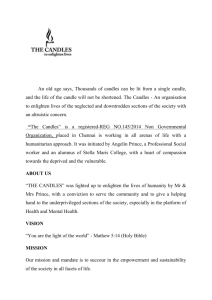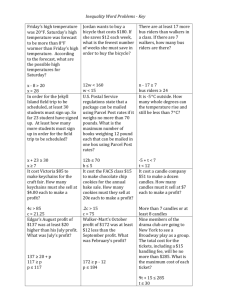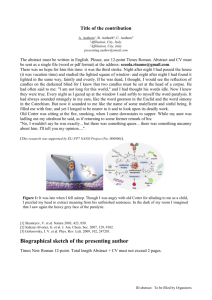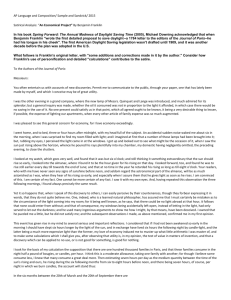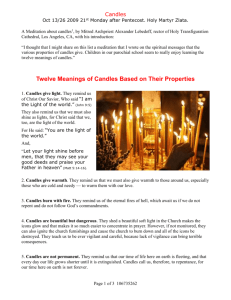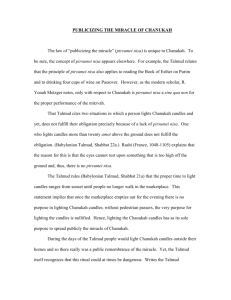Fire and H&S Policy - Winchelsea Parish Church
advertisement
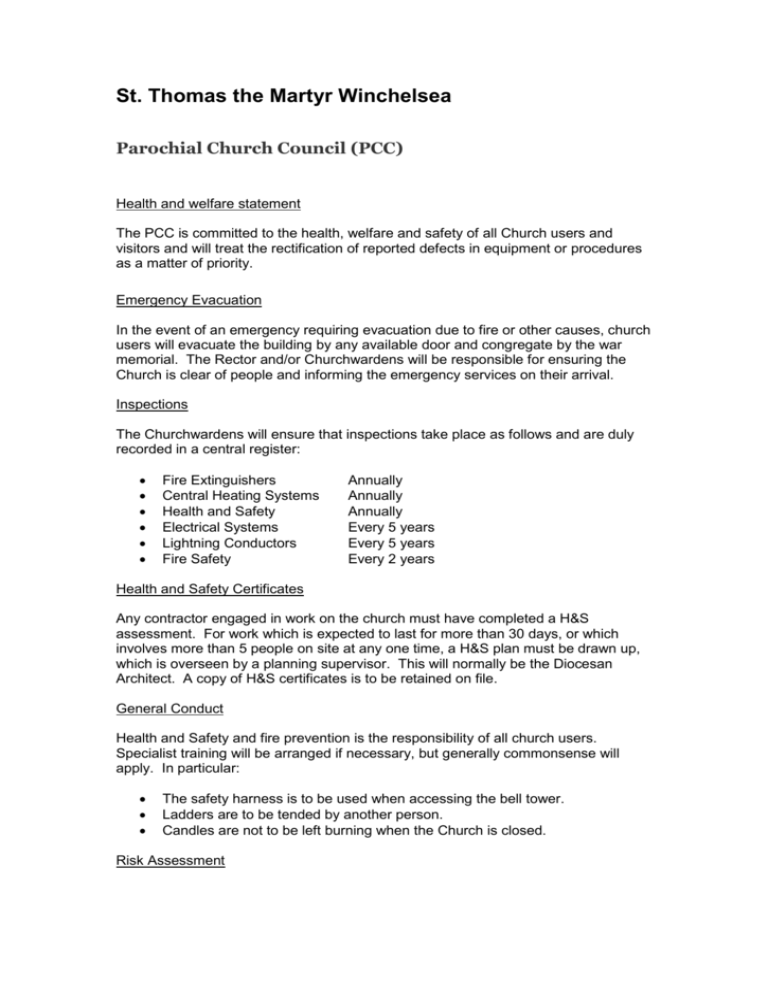
St. Thomas the Martyr Winchelsea Parochial Church Council (PCC) Health and welfare statement The PCC is committed to the health, welfare and safety of all Church users and visitors and will treat the rectification of reported defects in equipment or procedures as a matter of priority. Emergency Evacuation In the event of an emergency requiring evacuation due to fire or other causes, church users will evacuate the building by any available door and congregate by the war memorial. The Rector and/or Churchwardens will be responsible for ensuring the Church is clear of people and informing the emergency services on their arrival. Inspections The Churchwardens will ensure that inspections take place as follows and are duly recorded in a central register: Fire Extinguishers Central Heating Systems Health and Safety Electrical Systems Lightning Conductors Fire Safety Annually Annually Annually Every 5 years Every 5 years Every 2 years Health and Safety Certificates Any contractor engaged in work on the church must have completed a H&S assessment. For work which is expected to last for more than 30 days, or which involves more than 5 people on site at any one time, a H&S plan must be drawn up, which is overseen by a planning supervisor. This will normally be the Diocesan Architect. A copy of H&S certificates is to be retained on file. General Conduct Health and Safety and fire prevention is the responsibility of all church users. Specialist training will be arranged if necessary, but generally commonsense will apply. In particular: The safety harness is to be used when accessing the bell tower. Ladders are to be tended by another person. Candles are not to be left burning when the Church is closed. Risk Assessment A general risk assessment, designed to cover events held in the Church, including services, Church Market, concerts and lectures and a fire risk assessment is attached. General Risk Assessment This risk assessment applies to all events including all services, Church Market, concerts and lectures held in St Thomas’s Church, whether held under the auspices of the Church itself, the Church School, or a private organisation hiring the church under a Hiring Agreement The Assessment was undertaken by John Rodley, Churchwarden, on 1 September 13, covering the church and churchyard and is reviewed both annually and prior to any private event taking place. Risk Details: Hazard Controls Likelihood Severity Rating Additional Controls Churchyard slips on paths. Notices on gates Care reminders to users. Regular inspection. 3 2 6 1 3 3 Brief users. 2 1 2 Brief users. No lone working. Check ladder stability, height and footing. Wires tucked away close to walls. Furnishings do not obstruct access. Brief users. No lone working. Place evacuation route notices. Brief at start of event. Limit sales to items of known provenance. Regularly check stowage. Determine need for retention. 1 2 2 Seek to fund abrasion of flagstones. Arrange topple test as required. Adjust temp as necessary. Approval to work to be obtained from CWs. 2 1 2 Regular inspection. 2 1 2 1 2 2 1 3 3 Ensure supervision. Check maximum numbers expected. Check quality prior to event. 3 2 6 Falling decoration, masonry or hangings. None. 1 3 3 Falls from bell tower ladder. Use safety harness. Access only by cleared personnel. 1 3 3 Churchyard monument stability. Kitchen hot water scalds. Nave falls from ladders when decorating. Trips due to wires and furnishings. Injury due to manual handling of fittings. Ability to evacuate large numbers. Contamination of food offered for sale. Combustible material poorly stowed. Achieve greater decluttering. Candles snuffed when church closed. Seek to fund rectification of QQR defects. Visual inspection whenever used. Fire Risk Assessment Overall, the assessment is considered to be low, given the construction of the building. However, the fire risks that exist are associated with: The Boiler when it is in operation and the gas supplies to it. The actual risk of combustion is mitigated by an annual service and subsequent defect rectification. The electrical system and individual appliances in use in the church. The actual risk is mitigated by a 5 yearly electrical inspection and a 2 yearly PAT process. The roof due to lightning strikes and collateral damage to wooden fittings and hangings within the church. The actual risk is mitigated by the fitting of a lightning conductor, which is tested every 5 years. The large amounts of flammable material, mainly paperwork and portable decoration that exists in the church, the latter being particularly prevalent at festivals. The risk is mitigated by regularly checking the adequacy and safety of stowage, as well as the need for and quantity of retention. Candles, votive candles and incense. The risk is mitigated by ensuring that nothing is left burning while the church is unoccupied. The exception is the votive candles, which are kept away from combustible material and are snuffed when the church is closed. Vandalism, about which very little can be done. Personal Safety The risk to personal safety due to fire is also assessed to be low, given numbers generally in the church and the likelihood of combustion. Evacuation of the church would take place and appropriate signage is used for major events in the church, when those more unfamiliar with the building might be present. Four water based fire extinguishers are located in the nave and another is in the kitchen area. These are checked every 2 years. There is no risk of collateral damage to neighbours or their property. Incident Log Date Incident Action Taken
